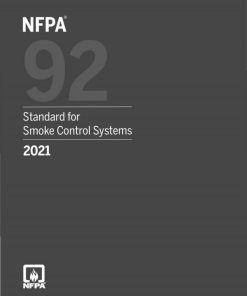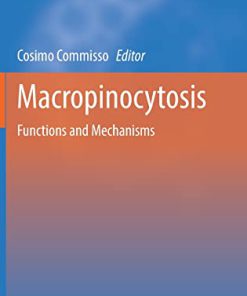Flow Chemistry Applications 2nd Edition by Ferenc Darvas, György Dormán, Volker Hessel, Steven V Ley ISBN 9783110693690 3110693690
$50.00 Original price was: $50.00.$25.00Current price is: $25.00.
Flow Chemistry Applications 2nd Edition by Ferenc Darvas, György Dormán, Volker Hessel, Steven V Ley – Ebook PDF Instant Download/Delivery: 9783110693690 ,3110693690
Full download Flow Chemistry Applications 2nd Edition after payment

Product details:
ISBN 10: 3110693690
ISBN 13: 9783110693690
Author: Ferenc Darvas, György Dormán, Volker Hessel, Steven V Ley
Flow Chemistry Applications 2nd Edition Table of contents:
Gabriele Laudadio, Timothy Noël 1 Photochemical transformations in continuous-flow reactors
1.1 Introduction
1.2 Photochemical versus thermochemical activation of molecules
1.3 Important considerations when performing photochemistry in microreactors
1.4 How to build your own photochemical reactor
1.5 The selection of the right light source
1.6 How flow can make an impact on synthetic organic photochemistry – concrete examples
1.6.1 Homogeneous reaction conditions
1.6.2 Multiphase reaction conditions
1.7 Scale-up of photochemical processes
1.8 Use of automation protocols in combination of photochemical flow reactors
1.9 Summary
Martin Linden, Maximilian M. Hielscher, Balázs Endrődi, Csaba Janáky, Siegfried R. Waldvogel 2 Electrochemical processes in flow
2.1 Electrochemical aspects in flow
2.1.1 General electrochemical aspects
2.1.2 Electrolysis in flow
2.1.3 Follow-up conversions
2.1.4 Availability of lab-scale flow electrolyzers
2.2 Design of flow electrolyzers
2.2.1 Industrial narrow gap cells
2.2.2 Membrane/diaphragm-separated electrolyzer cells and plate-frame approach
2.2.3 Gas diffusion electrodes
2.2.4 Electrochemical system design
2.3 Electrochemical processes in flow
2.3.1 Industrial electrochemical processes in flow
2.3.2 Electroconversion of small molecules
2.3.3 Electrosynthesis with high value addition
2.3.4 Electrochemical synthesis of drug metabolites
2.3.5 Paired and consecutive electrolysis
2.4 Strategies for screening and optimization
2.5 Options for industrialization and scale-up
D. V. Ravi Kumar, Suneha Patil, Amol A. Kulkarni 3 Continuous flow methods for synthesis of functional materials
3.1 Introduction
3.1.1 Flow synthesis of materials and difference from the typical flow synthesis of organic compounds
3.1.2 Material synthesis approach in flow
3.2 Protocols for flow synthesis of materials and various examples
3.2.1 Flow synthesis of metal, metal oxides, and silica particles
3.2.2 Nanohybrids
3.2.3 Two-dimensional materials
3.2.4 Catalysts
3.2.5 Porous materials
3.2.6 Mesoporous materials
3.2.7 Quantum dots
3.3 High-throughput continuous flow synthesis of materials
3.4 Challenges and future directions
3.4.1 Challenges associated with separation and purification of the materials (and recent developments in this direction)
3.4.2 Immobilization of materials
3.4.3 Process control
3.4.4 Cleaning of systems
3.5 Summary and recommendations
Tanja Junkers 4 Polymer synthesis in continuous flow
4.1 Introduction
4.2 Anionic polymerization
4.3 Homogeneous radical polymerization
4.3.1 Atom transfer radical polymerization
4.3.2 Nitroxide-mediated polymerization
4.3.3 RAFT polymerization
4.4 Ring-opening (metathesis) polymerization
4.5 Photopolymerization
4.6 Polymer modification in continuous flow
4.7 Online monitoring of continuous flow polymerizations
4.8 Machine learning in polymer flow synthesis
4.9 Conclusion and outlook
Genovéva Filipcsei, Zsolt Ötvös, Réka Angi, Balázs Buchholcz, Ádám Bódis, Ferenc Darvas 5 Flow chemistry for nanotechnology
5.1 Introduction to nanotechnology
5.2 Nanomaterials
5.2.1 Size, structure, and size-dependent properties
5.2.2 Introduction to the diverse world of nanomaterials
5.3 Principles of nanoparticle synthesis
5.4 Flow chemistry–based nanoparticle synthesis in practice and their application
5.4.1 Synthesis and application of organic nanoparticles
5.4.2 Synthesis and application of inorganic nanoparticles
5.4.3 Synthesis of composite nanoparticles
Francesco Ferlin, Nam Nghiep Tran, Aikaterini Anastasopoulou, Marc Escribà Gelonch, Daniela Lanari, Federica Valentini, Volker Hessel, Luigi Vaccaro 6 From green chemistry principles to sustainable flow chemistry
Objective of this chapter
6.1 Quantitative sustainability assessment and outlook to flow chemistry
6.1.1 Green metrics for use in flow chemistry
6.1.2 Green chemistry metrics
6.2 Flow chemistry and green metrics
6.2.1 Application of green metrics to flow chemistry
6.2.2 Biomass-derived and/or waste-derived alternatives to classic solvents
6.2.3 Biomass-derived solvent production in flow
6.2.4 Flow protocols combining biomass-derived solvents and heterogeneous catalysis
6.2.5 Waste minimization
6.2.6 Flow-assisted sustainable synthesis of drugs and intermediates
6.2.7 Critical evaluation to assess the greenness of synthetic procedures
Antonio M. Rodríguez, Iván Torres-Moya, Angel Díaz-Ortiz, Antonio de la Hoz, Jesús Alcázar 7 Flow chemistry in fine chemical production
7.1 Introduction
7.2 Advantages of flow technology in chemical production
7.2.1 Cleaner chemistry
7.2.2 Enhanced synthesis
7.2.3 New reactivity patterns
7.2.4 Improved safety
7.3 Flow chemistry in drug discovery
7.3.1 Heterogeneous organometallic catalysis
7.3.2 Homogeneous organometallic catalysis
7.3.3 Multistep and telescoped flow synthesis
7.3.4 Library synthesis
7.3.5 Other technologies applicable to drug discovery
7.4 Flow chemistry in fragrance and agrochemical production
7.4.1 Fragrance production
7.4.2 Agrochemical production
7.5 Conclusions and outlook
Kai Wang, Jian Deng, Chencan Du, Guangsheng Luo 8 Scale-up of flow chemistry system
8.1 Introduction of scale-up
8.1.1 Scale-up of chemical equipment
8.1.2 Principle of scale-up of flow chemistry system
8.2 Scale-up of mixing equipment
8.2.1 Numbering-up of mixing units
8.2.2 Similarity-up of T-junction mixing unit
8.2.3 Fluid distributors in enlarged mixers
8.2.4 Package and connection of mixer
8.3 Scale-up of reaction tubes and channels
8.3.1 Numbering-up of reaction tubes for exothermic reactions
8.3.2 Numbering up of photochemical and electrochemical flow reactors
8.3.3 Fluid distributors of reaction tubes and channels
8.4 Coupling of microequipment and conventional equipment
8.4.1 Integration of micromixer with tubular reactor
8.4.2 Integration of micromixer with packed bed reactor
8.4.3 Integration of micromixer with stirred tank reactor
8.5 Examples of flow chemistry systems in industry or pilot plant
8.5.1 Butyl rubber bromination microreaction system
8.5.2 Nano-calcium carbonate powder preparation reactor
8.5.3 Cyclohexanone-oxime Beckman rearrangement reactor
8.5.4 Bromo-3-methylanisole synthesis reaction system
8.5.5 Food-grade phosphoric acid purification equipment
8.6 Summary
Sara Miralles-Comins, Elena Alvarez, Pedro Lozano, Victor Sans 9 Exothermic advanced manufacturing techniques in reactor engineering: 3D printing applications in flow chemistry
9.1 Introduction to 3D printing applied to flow chemistry
9.2 Classification of 3DP techniques
9.2.1 Vat photopolymerization
9.2.2 Powder-based technologies
9.2.3 Extrusion technologies
9.2.4 Jetting technologies
9.2.5 Other AM technologies
9.3 Applications of 3D printing in flow chemistry
9.4 Future directions: digitalization of reactor design and manufacturing
9.5 Conclusions
Francesca Paradisi, László Poppe 10 Continuous-flow biocatalysis with enzymes and cells
10.1 Introduction
10.2 Considerations for the design of CF biocatalysis procedures
10.2.1 Choice of biocatalysts
10.2.2 Key design criteria
10.3 Practical guide to CF biocatalysis
10.3.1 Production of enzymes and cofactors
10.3.2 In situ immobilization
10.3.3 Optimization of reaction under flow conditions
10.3.4 Downstream processing and recycling
10.4 Examples of CF biosynthetic syntheses
10.4.1 Large-scale biocatalysis in CF
10.4.2 Examples of continuous-flow biotransformations
10.4.3 More illustrative examples
10.5 Challenges and future opportunities
10.5.1 Upscaling and integration
10.5.2 On-demand fabrication of bioreactors
10.5.3 Machine learning in continuous monitoring and control
Steven V. Ley, Oliver S. May, Oliver M. Griffiths, Karin Sowa 11 Outlook, future directions, and emerging applications
11.1 Introduction: past, present, and future
11.2 General considerations
11.2.1 Planning to succeed
11.2.2 The right chemistry
11.2.3 Sustainability: cleaner and greener
11.2.4 Safety: protecting the user
11.2.5 Data, data, data
11.3 Current progress
11.3.1 Upstream
11.3.2 Downstream
11.3.3 Feedback and control
11.3.4 Self-optimization
11.4 The future
11.4.1 Integrating batch and flow: A hybridized approach
11.4.2 Mimicking nature: the role of biotransformations
11.4.3 Seeing the future: machine vision
11.4.4 Machine learning
11.4.5 AI: Artificial intelligence
11.4.6 Data collection and storage
11.4.7 Printing the future: 3D printing
11.4.8 High-throughput synthesis: faster is better
11.4.9 Education: teaching the next generation
11.5 Final thoughts
People also search for Flow Chemistry Applications 2nd Edition:
flow-chemistry
applications of flow chemistry
flow chemistry integrated approaches for practical applications pdf
q-flow pharmacy
u florida chemistry
Tags: Ferenc Darvas, György Dormán, Volker Hessel, Steven V Ley, Flow Chemistry
You may also like…
Housekeeping & Leisure - Handicraft: Cutting and Sewing
Uncategorized
Technique - Regulatory Literature
NFPA 92 Standard for Smoke Control Systems 2021 Edition National Fire Protection Association
Arts - Architecture
Housekeeping & Leisure - Games: Chess
Religion & Spirituality - Christianity
The Life of Jesus Christ Part One Volume 2 Chapters 41 92 Ludolph Of Saxony
Housekeeping & Leisure - Games: Chess
Uncategorized
Macropinocytosis Functions and Mechanisms Subcellular Biochemistry 98 Cosimo Commisso Editor











